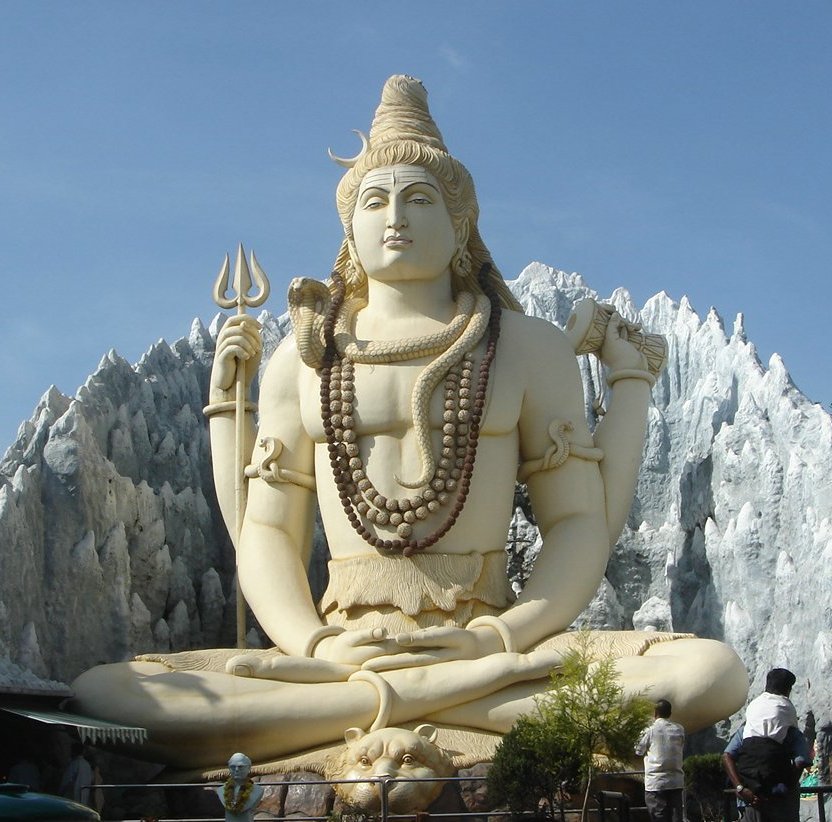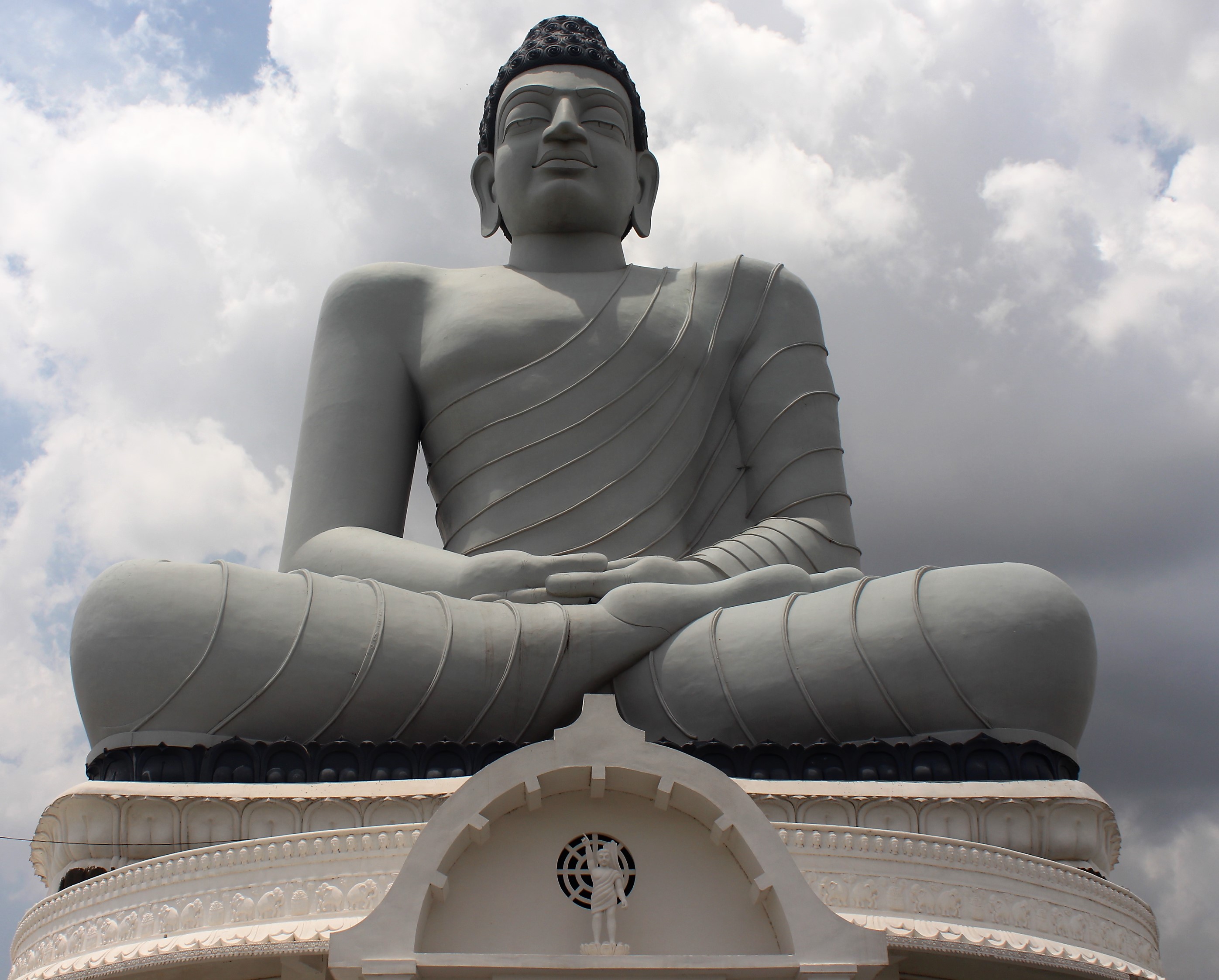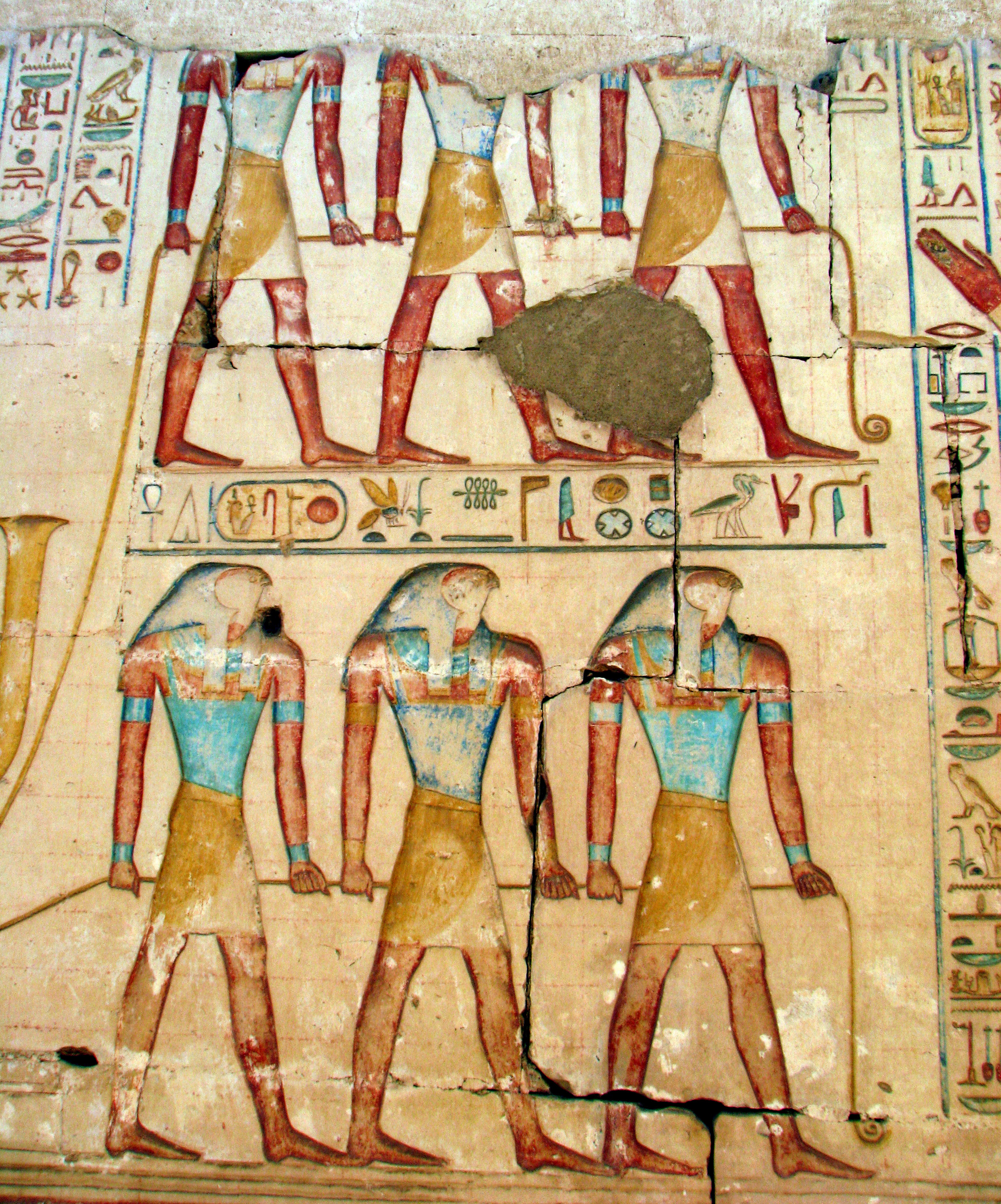|
Samādhi
''Samadhi'' (Pali and sa, समाधि), in Buddhism, Hinduism, Jainism, Sikhism and yogic schools, is a state of meditative consciousness. In Buddhism, it is the last of the eight elements of the Noble Eightfold Path. In the Ashtanga Yoga tradition, it is the eighth and final limb identified in the ''Yoga Sutras'' of Patanjali. In the oldest Buddhist suttas, on which several contemporary western Theravada teachers rely, it refers to the development of an investigative and luminous mind which is equanimous and mindful. In the yogic traditions, and the Buddhist commentarial tradition on which the Burmese Vipassana movement and the Thai Forest tradition rely, it is interpreted as a meditative absorption or trance, attained by the practice of '' dhyāna''. Definitions ''Samadhi'' may refer to a broad range of states. A common understanding regards ''samadhi'' as meditative absorption: * Sarbacker: ''samādhi'' is meditative absorption or contemplation. * Diener, Erhard & ... [...More Info...] [...Related Items...] OR: [Wikipedia] [Google] [Baidu] |
Yoga Sutras Of Patanjali
The ''Yoga Sutras of Patañjali'' is a collection of Sanskrit sutras (aphorisms) on the theory and practice of yoga – 195 sutras (according to Vyasa, Vyāsa and Krishnamacharya) and 196 sutras (according to others, including BKS Iyengar). The ''Yoga Sutras'' was compiled in the early centuries CE, by the sage Patanjali in India who synthesized and organized knowledge about yoga from much older traditions. The ''Yoga Sutras'' is best known for its reference to ''Ashtanga (eight limbs of yoga), ashtanga'', eight elements of practice culminating in ''samadhi''. The eight elements are ''Yamas, yama'' (abstinences), ''niyama'' (observances), ''asana'' (yoga postures), ''pranayama'' (breath control), ''pratyahara'' (withdrawal of the senses), ''dharana'' (concentration of the Citta, mind), ''Dhyana in Hinduism, dhyana'' (meditation) and ''samadhi'' (absorption). The main aim of practice is ''kaivalya'', discernment of ''purusha'', the witness-consciousness, as distinct from ''pra ... [...More Info...] [...Related Items...] OR: [Wikipedia] [Google] [Baidu] |
Theravada
''Theravāda'' () ( si, ථේරවාදය, my, ထေရဝါဒ, th, เถรวาท, km, ថេរវាទ, lo, ເຖຣະວາດ, pi, , ) is the most commonly accepted name of Buddhism's oldest existing school. The school's adherents, termed Theravādins, have preserved their version of Gautama Buddha's teaching or ''Buddha Dhamma'' in the Pāli Canon for over two millennia. The Pāli Canon is the most complete Buddhist canon surviving in a classical Indian language, Pāli, which serves as the school's sacred language and ''lingua franca''.Crosby, Kate (2013), ''Theravada Buddhism: Continuity, Diversity, and Identity'', p. 2. In contrast to '' Mahāyāna'' and '' Vajrayāna'', Theravāda tends to be conservative in matters of doctrine ('' pariyatti'') and monastic discipline (''vinaya''). One element of this conservatism is the fact that Theravāda rejects the authenticity of the Mahayana sutras (which appeared c. 1st century BCE onwards). Modern Ther ... [...More Info...] [...Related Items...] OR: [Wikipedia] [Google] [Baidu] |
Ashtanga (eight Limbs Of Yoga)
Ashtanga yoga (, "the eight limbs of yoga") is Patanjali's classification of classical yoga, as set out in his ''Yoga Sutras''. He defined the eight limbs as yamas (abstinences), niyama (observances), asana (postures), pranayama (breathing), pratyahara (withdrawal), dharana (concentration), dhyana (meditation) and samadhi (absorption). The eight limbs form a sequence from the outer to the inner. Postures, important in modern yoga as exercise, form just one limb of Patanjali's scheme; he states only that they must be steady and comfortable. The main aim is '' kaivalya'', discernment of ''Purusha'', the witness-conscious, as separate from '' prakriti'', the cognitive apparatus, and disentanglement of ''Purusha'' from its muddled defilements. Definition of yoga Patanjali begins his treatise by stating the purpose of his book in the first sutra, followed by defining the word "yoga" in his second sutra of Book 1: * Sanskrit Original with Translation 1The Yoga PhilosophyTR Ta ... [...More Info...] [...Related Items...] OR: [Wikipedia] [Google] [Baidu] |
Yogic
Yoga (; sa, योग, lit=yoke' or 'union ) is a group of physical, mental, and spiritual practices or disciplines which originated in ancient India and aim to control (yoke) and still the mind, recognizing a detached witness-consciousness untouched by the mind (''Chitta'') and mundane suffering ('' Duḥkha''). There is a wide variety of schools of yoga, practices, and goals in Hinduism, Buddhism, and Jainism,Stuart Ray Sarbacker, ''Samādhi: The Numinous and Cessative in Indo-Tibetan Yoga''. SUNY Press, 2005, pp. 1–2.Tattvarthasutra .1 see Manu Doshi (2007) Translation of Tattvarthasutra, Ahmedabad: Shrut Ratnakar p. 102. and traditional and modern yoga is practiced worldwide. Two general theories exist on the origins of yoga. The linear model holds that yoga originated in the Vedic period, as reflected in the Vedic textual corpus, and influenced Buddhism; according to author Edward Fitzpatrick Crangle, this model is mainly supported by Hindu scholars. According ... [...More Info...] [...Related Items...] OR: [Wikipedia] [Google] [Baidu] |
Patanjali
Patanjali ( sa, पतञ्जलि, Patañjali), also called Gonardiya or Gonikaputra, was a Hinduism, Hindu author, mystic and philosopher. Very little is known about him, and while no one knows exactly when he lived; from analysis of his works it is estimated that it was between the 2nd and 4th centuries CE. He is believed to be an author and compiler of a number of Sanskrit literature, Sanskrit works. The greatest of these are the ''Yoga Sutras'', a classical yoga text. There is speculation as to whether the sage Patañjali is the author of all the works attributed to him, as there are a number of known historical authors of the same name. A great deal of scholarship has been devoted over the last century as to the issue of the historicity or identity of this author or these authors. lists ten separate authors by the name of "Patañjali." Amongst the more important authors called Patañjali are: * The author of the ''Mahābhāṣya'', an ancient treatise on Sanskrit gram ... [...More Info...] [...Related Items...] OR: [Wikipedia] [Google] [Baidu] |
Buddhist
Buddhism ( , ), also known as Buddha Dharma and Dharmavinaya (), is an Indian religion or philosophical tradition based on teachings attributed to the Buddha. It originated in northern India as a -movement in the 5th century BCE, and gradually spread throughout much of Asia via the Silk Road. It is the world's fourth-largest religion, with over 520 million followers (Buddhists) who comprise seven percent of the global population. The Buddha taught the Middle Way, a path of spiritual development that avoids both extreme asceticism and hedonism. It aims at liberation from clinging and craving to things which are impermanent (), incapable of satisfying ('), and without a lasting essence (), ending the cycle of death and rebirth (). A summary of this path is expressed in the Noble Eightfold Path, a training of the mind with observance of Buddhist ethics and meditation. Other widely observed practices include: monasticism; "taking refuge" in the Buddha, the , and the ... [...More Info...] [...Related Items...] OR: [Wikipedia] [Google] [Baidu] |
Dhyāna In Buddhism
In the oldest texts of Buddhism, ''dhyāna'' () or ''jhāna'' () is a component of the training of the mind ('' bhavana''), commonly translated as meditation, to withdraw the mind from the automatic responses to sense-impressions, "burn up" the defilements, and leading to a "state of perfect equanimity and awareness ('' upekkhā- sati- parisuddhi'')." ''Dhyāna'' may have been the core practice of pre-sectarian Buddhism, in combination with several related practices which together lead to perfected mindfulness and detachment. In the later commentarial tradition, which has survived in present-day Theravāda, ''dhyāna'' is equated with "concentration", a state of one-pointed absorption in which there is a diminished awareness of the surroundings. In the contemporary Theravāda-based Vipassana movement, this absorbed state of mind is regarded as unnecessary and even non-beneficial for the first stage of awakening, which has to be reached by mindfulness of the body and ''vi ... [...More Info...] [...Related Items...] OR: [Wikipedia] [Google] [Baidu] |
Yogi
A yogi is a practitioner of Yoga, including a sannyasin or practitioner of meditation in Indian religions.A. K. Banerjea (2014), ''Philosophy of Gorakhnath with Goraksha-Vacana-Sangraha'', Motilal Banarsidass, , pp. xxiii, 297-299, 331 The feminine form, sometimes used in English, is yogini. Yogi has since the 12th century CE also denoted members of the Nath siddha tradition of Hinduism, and in Hinduism, Buddhism and Jainism, a practitioner of tantra.Rita Gross (1993), ''Buddhism After Patriarchy'', SUNY Press, , pages 85–88 In Hindu mythology, the god Shiva and the goddess Parvati are depicted as an emblematic yogi–yogini pair. Etymology In Classical Sanskrit, the word ''yogi'' (Sanskrit: masc ', योगी; fem ') is derived from ''yogin'', which refers to a practitioner of yoga. ''Yogi'' is technically male, and ''yoginī'' is the term used for female practitioners. The two terms are still used with those meanings today, but the word ''yogi'' is also us ... [...More Info...] [...Related Items...] OR: [Wikipedia] [Google] [Baidu] |
Super Consciousness
The superconscious (also super-conscious or super conscious) is a proposed aspect of mind to accompany the conscious and subconscious and/or unconscious. It is able to acquire knowledge through non-physical or psychic mechanisms and pass that knowledge to the conscious mind.Atkinson, William Walker. (1909). ''Subconscious and Superconscious; Planes of Mind'', Progress, Chicago, 1909.Lyttelton, Edith (1931). ''Our Superconscious Mind'', Philip Allan, 1931. It therefore transcends ordinary consciousness. The term is also used to describe transcendental states of consciousness achieved through meditation and related practices, thus accessing the superconscious mind directly. Knowledge acquired by the superconscious need not be from the present or nearby, it may be from the past or future, from a physically remote present, or of beings undetectable by the physical senses. Superconsciousness is therefore offered in order to provide an explanation for psychic phenomena such as precogniti ... [...More Info...] [...Related Items...] OR: [Wikipedia] [Google] [Baidu] |
Paramahansa Yogananda
Paramahansa Yogananda (born Mukunda Lal Ghosh; January 5, 1893March 7, 1952) was an Indian Hindu monk, yogi and guru who introduced millions to the teachings of meditation and Kriya Yoga through his organization Self-Realization Fellowship (SRF) / Yogoda Satsanga Society (YSS) of India, and who lived his last 32 years in America. A chief disciple of the Bengali yoga guru Swami Sri Yukteswar Giri, he was sent by his lineage to spread the teachings of yoga to the West, to prove the unity between Eastern and Western religions and to preach a balance between Western material growth and Indian spirituality. His long-standing influence in the American yoga movement, and especially the yoga culture of Los Angeles, led him to be considered by yoga experts as the "Father of Yoga in the West." Yogananda was the first major Indian teacher to settle in America, and the first prominent Indian to be hosted in the White House (by President Calvin Coolidge in 1927); his early acclaim l ... [...More Info...] [...Related Items...] OR: [Wikipedia] [Google] [Baidu] |
Soul
In many religious and philosophical traditions, there is a belief that a soul is "the immaterial aspect or essence of a human being". Etymology The Modern English noun '':wikt:soul, soul'' is derived from Old English ''sāwol, sāwel''. The earliest attestations reported in the ''Oxford English Dictionary'' are from the 8th century. In King Alfred's translation of ''De Consolatione Philosophiae'', it is used to refer to the immaterial, spiritual, or thinking aspect of a person, as contrasted with the person's physical body; in the Vespasian Psalter 77.50, it means "life" or "animate existence". The Old English word is cognate with other historical Germanic languages, Germanic terms for the same idea, including Old Frisian ''sēle, sēl'' (which could also mean "salvation", or "solemn oath"), Gothic language, Gothic ''saiwala'', Old High German ''sēula, sēla'', Old Saxon ''sēola'', and Old Norse ''sāla''. Present-day cognates include Dutch ''ziel'' and German ''Seele''. Re ... [...More Info...] [...Related Items...] OR: [Wikipedia] [Google] [Baidu] |






